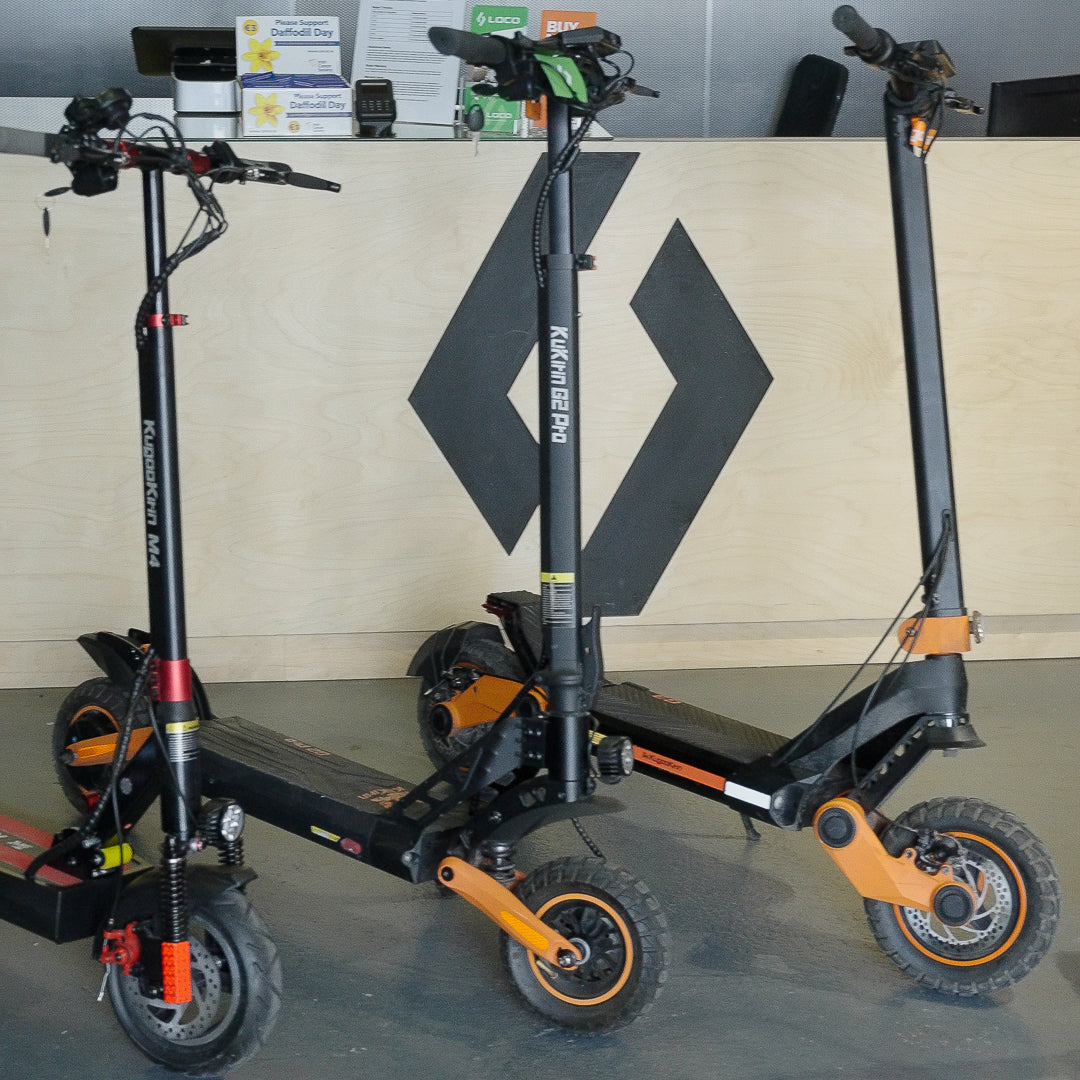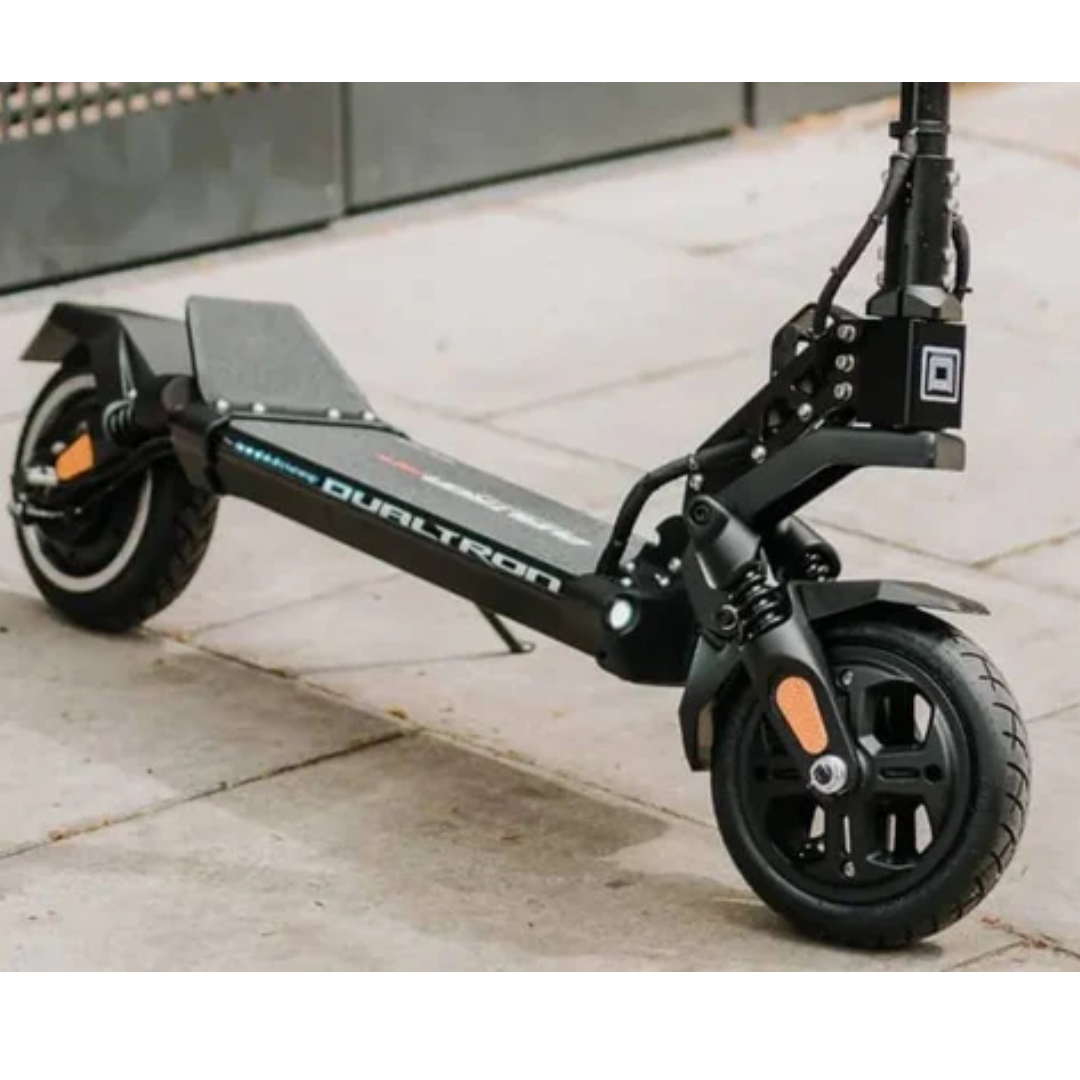Dualtron Electric Scooter - Programme Settings (P Settings)
Hey guys it’s Paddy from LOCO Scooters, Ireland’s favourite provider of specialist electric scooters and repairs. In my recent review of the Dualtron Mini electric scooter I touched briefly on the p-settings and promised to do a more in depth, separate piece on what they are, what they do and how you can change your p-settings on a Dualtron electric scooter so that you always get the most out of your electric scooter.
The entire range of Minimotors electric scooters, including the Dualtron series uses the EY3 (eye) throttle. Stored within the EY3 throttle are the program settings (p-settings). These are a series of various settings which the user can adjust to allow them to take better control of various aspects of their electric scooter. You might be asking how to change p-settings on Dualtron electric scooters, and if you are, you’re in the right place. Stick with me as I take you one by one through the program settings on the EY3 throttle. It’s worth also noting that this is the same throttle used on the Kaabo Wolf Warrior 11.
The EY3 throttle contains 14 pre-set p-settings, some of which are customisable and some of which you really do need to leave alone. To access the p-settings on your EY3 throttle, do the following;
- Turn on your electric scooter
- Long press the mode button (3 seconds) and you’re now in the p-setting menu
- Use the mode button to toggle through the p-settings
- Use the multifunction button (top one) to adjust values
- To save settings, let the LCD time out or long press the mode button to exit the p-setting menu
So, let’s take a look at the full list of p-settings for Dualtron electric scooters.
P-0 Wheel Size
P-0 (do not adjust): this program setting informs the LCD what the diameter of the tyres is. This allows the display to calculate your moving speed using a rough approximation of current RPM combined with the size of the tyres. Your user manual will tell you not to adjust this but you’re not going to do any damage if you do. In fact, adjusting this p-setting on your Dualtron electric scooter can make the speedometer more accurate.
P-1 Voltage
P-1 (do not adjust): Your system relies on this value to calculate how much battery you have left based on the low voltage cut-off value. If you have this set lower than it should be, your battery meter will show a full state of charge for longer. This p-setting should not be interfered with and if you do accidentally change it, ensure to consult your user manual for the correct voltage.
P-2 Motor Poles
P-2 (do not adjust): indicates the number of poles in the motor. A brushless DC motor turns by firing up the poles of the stator (fixed) in a precise order and timing sequence to create an electromagnetic field, keeping the rotor (outer part of the motor and wheel) spinning. You should not make any changes to this program setting.
P-3 Speed Configurations
P-3 (do not adjust): determines the method used by the scooter to calculate your speed. No need, reason or justification for changing this setting and you should not change it.
Now let’s take a look at the more interesting end of things, the programmable settings on your Dualtron EY3 throttle. You may want to adjust some or all of these settings to maximise your enjoyment and the practicality of your Dualtron or Kaabo electric scooter.
P-4 Kilometers Or Miles
P-4: unit of measurement in either kilometres or miles. If you’re in the US or UK and you’re a helpless victim of the inefficient Imperial system of measurement then you’re going to be used to miles and if you’re in Europe, Australia and most of Asia you’ll be interested in kilometres. Set P-4 to 0 for kilometres or 1 for miles.
P-5 Start Mode (kick start or zero start)
P-5: start mode (kick start or zero start). The reality here is that most of us have a preference as to whether we want to kick our electric scooter off to start or have it start as soon as we hit the throttle. Personal experience tells me that items of clothing can get snagged on the throttle accidentally or the throttle could catch in a doorframe and the scooter could take off unexpectedly. This is very much not ideal if you’re riding something like a Dualtron Thunder 2 which will cause damage or injury. Aside from this, the various shortcomings of the human brain can tempt curious individuals to give the throttle a “what does this do” exploratory squeeze. Damage and injury are damage and injury, whether the person deserves it or not. Any scooter I ride is set to kick start to avoid the aforementioned damage and injury. Set P-5 to 1 for kick start or 2 for zero start. The default setting is 1.
P-6 Cruise Control
P-6: cruise control. This particular one will be the hill I die on (no pun intended *touches wood*). I hate cruise control and I consider it highly unsafe. It promotes rider complacency, distraction and it ultimately means that you may have to react twice to unexpected obstacles. Look, I understand that if you’re heading out a straight road to do 20km without turning or slowing down that cruise control is a nice convenience. Where cruise control could potentially kill you is when you’ve been squeezing the throttle for a bit without realising you’re in cruise control and someone steps out in front of you or a driver cuts you off. You’re going to release the throttle expecting to slow down, but cruise control has got other plans and now you’ve got to react a second time and the couple of precious seconds you lost have the potential to subject you to hospital food for a protracted period of time and nobody wants to eat that garbage.
P-7 Acceleration
P-7: acceleration (do not adjust this).
P-8 Power Level
P-8: power level. This one is simple and it allows you to set the power output of your Dualtron electric scooter from 1 (slowest) to 100 (fastest). The default is 100 and if you’re a complete newbie and you’ve picked yourself up something interesting like a Dualtron Thunder or Dualtron Ultra 2, then you should maybe consider reducing the max output or putting training wheels/stabilisers on it and making sure you have plenty of fresh pairs of underwear to hand.
P-9 Battery Saver
P-9: battery saver. This edits the torque values/how much current goes from the battery to the motors and since it’s an electric motor that also limits the top speed. You can choose between 1 (max), 2 (min) and 3 (none). My recommendation is to leave this one set to 2 (min) and from most of the anecdotal evidence I’ve encountered online and in store, there’s no real noticeable difference between min and none in terms of speed, and “none” will deplete your battery much faster.
P-A Electronic Brake Strength
P-A: electronic brake strength. In the exact same way that the motor poles are responsible for making your Dualtron electric scooter go faster, they are responsible for the opposite too. There are many ways to make your electric scooter go from 60 to 0 in a heartbeat, but we would rather not think about that. Instead, how about using the electronic brake setting to determine just how reactive your electronic braking is. You can set this from 0-5 in increments of 1, with 0 being electronic brake off and 5 is the maximum braking. 3 or 4 is good here, in my opinion. As an addition to this, our repair centre manager recently brought my attention to the fact that, without the electronic brake, a scooter like a VSETT 10+ or Dualtron Achilleus is going to devour brake pads. Save yourself some $$$ and turn up your electronic brake.
P-B: LCD brightness
P-B: LCD brightness. 0-5 in increments of 1. Boring, next.
P-C: Auto-off time
P-C: Auto-off time. 0-30 minutes in increments of 1 minute. The most boring p-setting of them all.
P-D: ABS Settings
P-D: ABS setting. Most high-power electric scooters these days have ABS brakes. ABS stands for anti-lock braking system and simply put; it prevents you from going into a skid if you hammer the brakes. Without ABS, if you hammer the brakes then you also completely lock the wheels and then, naturally, it is not possible to steer and you become the unwilling participant in a physics experiment. Instead, ABS rapidly pulses the brakes to allow the wheels to continue to turn and grants traction to your tyres. You can turn this off or on – my preference is on. Leave it at 1 for on and 0 for off.
That’s a wrap for this one my friends. If you found yourself wondering, how do I change the p-settings on my EY3 throttle, then you need wonder no more. I’ll be back soon with my Dualtron Thunder review, sure to be a good one so don’t miss it! Until next time, and as always, keep the rubber side down and take care.




1 comment
Steve
Handy bit of info here guy’s, it’s more elaborate than that given in the owner’s manual. Appreciated. Thanks
Handy bit of info here guy’s, it’s more elaborate than that given in the owner’s manual. Appreciated. Thanks